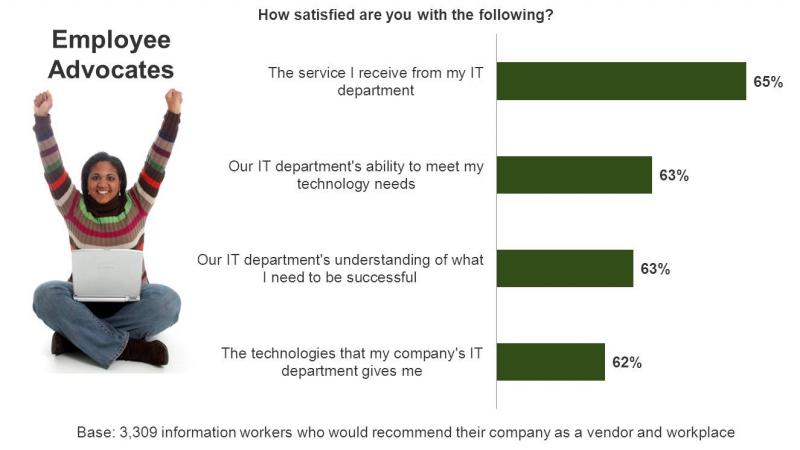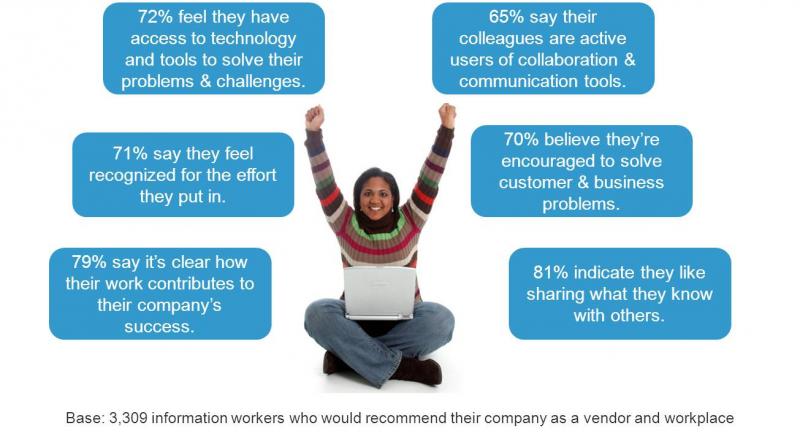Engaged Employees Expect IT Leaders To Understand Their Needs
My colleague Simon Yates and I have spent a good bit of time recently discussing the role of IT in creating engaging experiences for employees. We've proposed that IT leaders concern themselves with helping business leaders convert that engagement into productive actions that achieve positive business outcomes, like good customer experiences and employees advocating for the company. But what does this mean for IT leaders in practice? Well, let's look at a group of employees who are currently creating the types of outcomes businesses seek: those willing to advocate for their business as a place to work and as a place to do business. According to our Forrsights Workforce Employee Survey, Q4 2012, around two-thirds of this group feel IT understands and meets their needs (see figure below).

These positive attitudes toward the IT department's performance stand in stark contrast to the views of employees who aren't achieving these outcomes. For example, while 65% of employee advocates are satisfied with the service they receive from the IT department, just 27% of employees not fully advocating for the company share a similar opinion. So what creates this chasm in opinion? We find clues when we look at some of the attitudes employee advocates have about what their organizations allow them to do:

What is clear is that these employee advocates feel that their organizations give them a transparent, flexible, and collaborative workspace. This environment lets employees know their work matters, allows them to do what they think is best to solve customer problems, and provides a collegial environment where information sharing is encouraged. In other words, these employees work in organizations that create engaging conditions. Obviously, the corporate culture and policies create the conditions that allow for these working conditions. However, in a global, mobile and cosmopolitan business environment, technology is essential to keeping employees connected, motivated, engaged, and productive. But this is by no means a simple task, as our data shows.
Helping the business engage employees through technology experiences means IT leaders must not view their jobs as providing technology. They must see their mission as serving fundamental employee needs: ensuring employees have clarity into the company's mission; enabling employees to share information as necessary; giving workers flexibility to work in the manner necessary to best serve the business's needs. This means that the IT department has to be in the design business — thinking through how an employee accomplishes specific tasks and applying technology at critical junctions. IT leaders must embrace new disciplines to make this work: Voice of the Employee, iterative deployments, journey maps, and ethnographic research are but a few concepts CIOs need to leverage as they create technology roadmaps.
I'll be touching on these concepts with State Street's Ed Flahive, Razorfish's Ray Velez, and CHG Healthcare's Mike Peterson at our upcoming CIO Forum in Washington, DC. Leading up to that event, I'd like to get your opinions on this topic as we think about the importance of experience design in IT departments and the changes IT leaders must make to their organizations in order to truly help the business engage employees. I hope you're willing to participate in this conversation.